George Eastman, Kodak, and the Birth of Consumer Photography
Dedicated at the Kodak Center in Rochester, New York, on Oct. 3, 2022
In Spanish: George Eastman, Kodak y el nacimiento de la fotografía de consumo
In Mandarin: 乔治·伊士曼 (George Eastman)、柯达 (Kodak) 与消费级摄影的诞生
In Arabic: جورج إيستمان وشركة كوداك ونشأة تصوير المُستهلِك
Today we think nothing of taking a photograph. Devices that fit in the palm of a hand now allow much of the world’s population to snap a picture. By some estimates, almost 5 billion photos are taken per day. George Eastman would be envious, but he would also be proud. He is, in no small way, responsible for making photography possible for everyone.
In 1878, George Eastman was planning a vacation to the Caribbean. He wanted to take photographs, but it was a difficult proposition. The camera he bought for the trip was the size of a microwave oven. The chemicals and other supplies needed to develop photos were even more cumbersome. The experience left him determined to find a better way. Over the following years, Eastman modified the chemistry and equipment to make photography easier, so easy even a child could take photographs. The company he founded, Eastman Kodak, ultimately revolutionized photography. Thanks to the firm’s advances, the size of cameras was reduced, and film production and development was simplified. As a result, photography — initially a technique for the select few — became feasible for the general public.
Contents
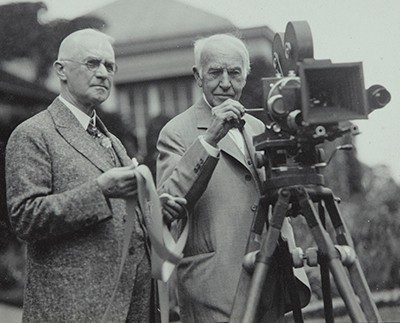
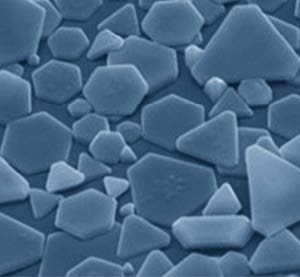
An unwieldy process
Back in 1878, the 24-year-old Eastman was planning to use the “wet collodion” process to take photos on his Caribbean trip.
Eastman would later recall that this technique entailed “taking a very clean glass plate and coating it with a thin solution of egg white. This was to make the subsequent emulsion stick. Then we coated the plate with a solution of guncotton and alcohol mixed with bromide salts. When the emulsion was set, but still moist, the plate was dipped into a solution of nitrate of silver, the sensitizing agent. That had to be done in the dark. The plate, wet and shielded from the light, was put in the camera. Now you took your picture.” It was a messy, time-consuming process.
As a better alternative, Eastman soon switched to the dry plate emulsion process. In this technique, glass plates were coated with a gelatin emulsion of silver bromide and then dried. This formed stable plates that could be produced in advance and stored, instead of having to be prepared right before exposure. They also had another advantage over wet collodion plates: They didn’t have to be developed right after a picture was taken. Eastman adopted the improvements of British photographer Charles Bennett, increasing the sensitivity of the photographic plates, which shortened exposure times.
While Eastman originally embarked on this project for his own hobby, he quickly began to see the commercial possibilities in manufacturing plates for other photographers. His early emulsions gave acceptable results, but applying them consistently to glass plates was difficult. The common practice was to spread the hot emulsion across a glass plate with a rod. This method produced variable results and was time-consuming and inefficient.
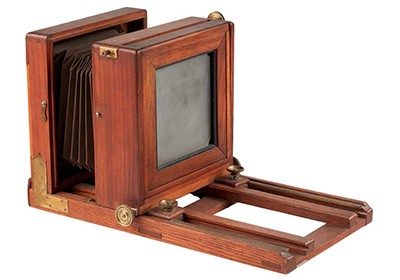
[In the 1870s], photographic paraphernalia typically included a large wooden view camera with tripod, a stack of 10- x 12-inch glass plates, an elaborate array of chemicals, trays, and, often, remarkably, a tent for preparing plates in the field… Each fragile glass plate had to be coated precisely with [an] emulsion minutes before exposure and developed soon after."
—The Globe and Mail, June 13, 2000
First patent
Eastman’s innate sense of what would work to make a commercial product viable led to his first patent, US 226,503 (Method and Apparatus for Coating Plates for Use in Photography), issued on April 13, 1880. In this process, a rubber roller is submerged in a trough of warm emulsion, above which a glass plate is suspended by suction cups. A crank moves the glass over the top of the roller, evenly coating the underside of the glass with emulsion. After the emulsion dries, the glass is cut into smaller pieces.
With the proceeds from licensing this patent, together with an investment from local buggy-whip manufacturer Henry A. Strong, Eastman founded the Eastman Dry Plate Company (later known as Eastman Kodak Company) on Jan. 1, 1881, in Rochester, New York.
Eastman then began experimenting with supports lighter than glass. Glass plates were largely used by professional portrait photographers, but they were heavy and difficult to transport. In 1885, Eastman introduced a roll film holder that fit into existing cameras, with the silver bromide emulsion coated directly on paper that had been spooled. After exposure and development, the emulsion layer was peeled from the paper. While much more convenient than glass slides, the image quality suffered because the grain of the paper was transmitted onto the resulting print.
To overcome this problem, Eastman first coated the paper with a soluble, non-light-sensitive gelatin layer, followed by an insoluble, light-sensitive emulsion. After exposure and development, the image-bearing layer was stripped away from the paper, transferred to a sheet of clear gelatin and then overcoated with collodion. Like glass plates, these resulting negatives could be used to produce prints.
Despite this technical success, Eastman found that professional photographers still preferred glass plates to the paper-based films. So he turned his attention to the general public.
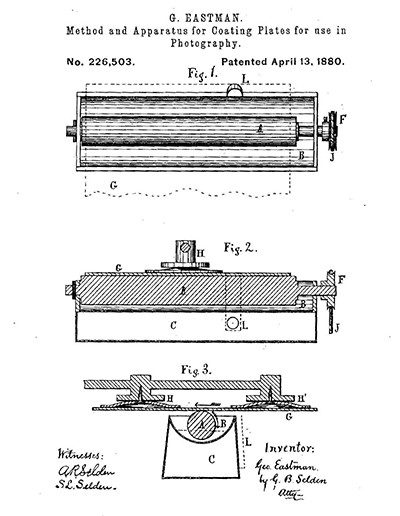
Catering to consumers
At the time, photography required a camera, film, and a means to develop the film. Eastman pioneered the mass production of all three. His genius lay as much in creating a technological system — the combination of film, camera, and photographs, all linked by commercial partners who could distribute the new cameras and film to an eager and growing consumer base — as in his original innovations in creating photographic media. That system enabled the Eastman Kodak company to disrupt the traditional professional photography market and establish its dominant position during the heyday of film-based consumer photography.
In 1888, Eastman introduced a new box-type camera, small in size and loaded with a spool of the strippable paper film. The camera sold for $25 (about $760 in 2022 currency). Only a press of a button was required to take a photo, and the camera could take 100. After all the exposures were done, the entire Kodak camera was shipped to Rochester where, for $10 (about $300 today), the film was removed, processed, and printed. The camera was then reloaded with fresh film and returned to the customer.
This handheld camera created a new market among amateur photographers; no longer was photography the exclusive domain of professionals. Eastman had completely separated picture taking from picture processing, and the slogan “You press the button, we do the rest” was born.
Despite the commercial success of this Kodak camera and spooled film, Eastman still wanted to develop a transparent support that would eliminate the need to strip the emulsion from its paper support. By 1888, other companies were coating dry photographic emulsions on celluloid plates, but the celluloid was too thick to be used in Kodak’s roll film cameras.
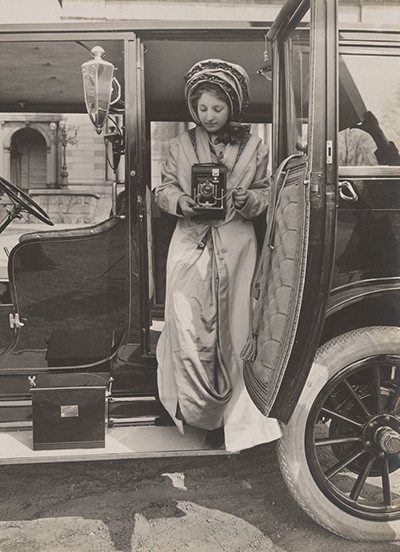
Better film
Eastman’s chief chemist at the time, Henry Reichenbach, soon produced a solution of nitrocellulose and camphor in methanol that strengthened celluloid so it could be cast into thin films. The addition of fusel oil (amyl alcohol) and amyl acetate prevented the camphor from crystallizing while the film dried. This film solution was coated onto large tables topped with glass. When the film had dried, the light-sensitive emulsion was coated on top. Both the clear celluloid base and the emulsion were then peeled, cut and spooled for loading into cameras. This advance created the transparent negative that is still the basis of film-based photography more than 130 years later.
These improvements in materials for producing photographs enabled a reduction in the size of the cameras themselves. Using nitrocellulose allowed Kodak to make available a collapsible camera model, and in 1897, the company released a pocket-sized camera. In 1900, Kodak introduced the Brownie camera. Selling for $1 in 1900, ($35 in 2022 currency) and marketed primarily to children, the Brownie was a huge success. Its simple controls and replaceable film spools (15 cents each in 1900, or $5 in 2022 currency) made it extremely user friendly, and over the next few years, millions of Brownie cameras were sold.
Other improvements to Eastman’s original processes followed. Chemical sensitization enhanced the light sensitivity of silver halide grains, thus reducing exposure time. Advances in understanding the self-catalyzing nature of silver halide reduction led to improved developers. Color photography became possible via special sensitizing dyes and dye intermediates. Cellulose acetate and other polymers became safer film alternatives to flammable nitrocellulose supports.
Underlying these advances, however, was George Eastman’s fundamental process of coating gelatin-stabilized silver halide on a flexible support — a process that remains unchanged and is still used to produce millions of rolls of film annually.
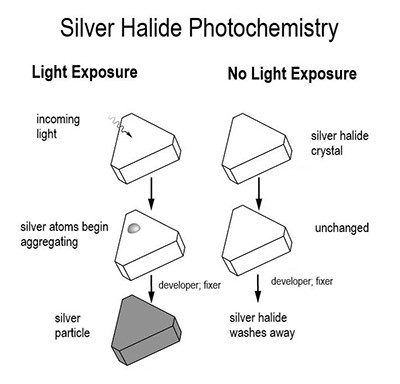
View larger image
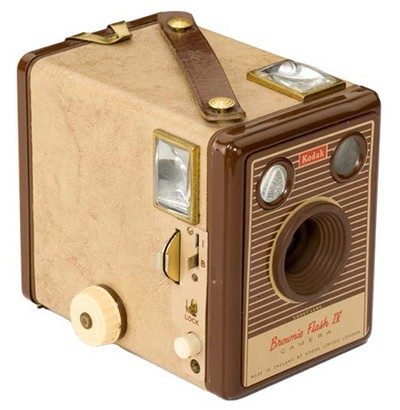
A brief history of George Eastman
George Eastman was born on July 12, 1854, in the small village of Waterville, New York. When he was six years old, his father moved the family to Rochester. Two years later, the elder Eastman died, leaving George, his mother and his two older sisters nearly penniless. Although he continued his schooling for a few more years, his family’s poverty eventually forced George to leave school at 14.
Determined to help his mother support the family, George took on many jobs. He was an office boy for an insurance firm, where his responsibilities grew until he was in charge of filing insurance policies and even writing some policies. It was not a lucrative job, and in the evenings he found himself studying accounting. It paid off, and in 1874 he was hired as a junior clerk for the Rochester Savings Bank.
A few years into his banking job, he began planning a vacation, which inspired him to think about buying a camera to take photos of his adventures. The vacation never panned out, but it catalyzed Eastman’s curiosity about photography. At the time, a camera wasn’t something that could be put in a pocket. It was a large box that required a tripod, while the glass plates used to create photos needed to be treated with chemicals on the spot. Eastman was determined to simplify the convoluted process.
He made up for his lack of chemistry training by reading magazines and journal articles about the chemicals that were used to capture images. Eastman continued working his bank job during the day, but at night, he used his mother’s kitchen as a lab where he could experiment on the chemical process behind photography.
Traditional cameras at the time used a wet plate process, but a new dry plate process was coming into vogue. Eastman developed his own dry plate method and also figured out how to scale up plate preparation.
In 1880, he obtained a patent for his method and began manufacturing plates in a rented office space. By 1881, he had an investor and launched the Eastman Dry Plate Company. Later that year, he quit his bank job.
Three years later the dry plate company expanded into film, and in 1889 the Eastman Company was formed. In 1892, it was renamed the Eastman Kodak Company.
Eastman was a lifelong philanthropist, and the success of his company enabled him to share his wealth with his employees and with educational, medical and artistic organizations. He died on March 14, 1932, at the age of 77.
What's in a name?
The word “Kodak” has prompted plenty of speculation through the years, but according to the firm’s website, “Eastman invented it out of thin air.”
“I devised the name myself,” the site quotes him as saying. “The letter ‘K’ had been a favorite with me — it seems a strong, incisive sort of letter. It became a question of trying out a great number of combinations of letters that made words starting and ending with ‘K.’ The word ‘Kodak’ is the result.” The term was registered as a trademark in 1888, the year that the firm introduced the Kodak Camera. It became part of the company name in 1892.
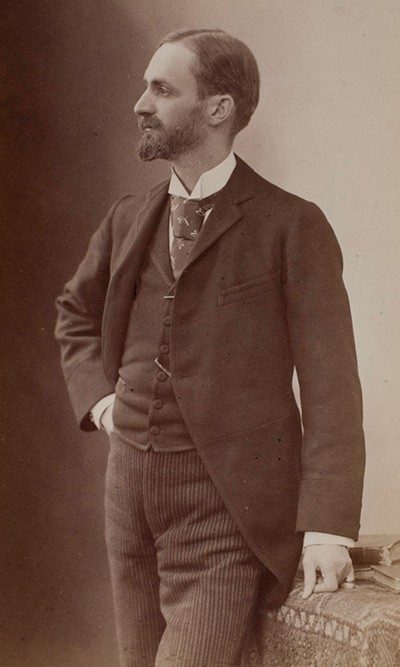
[Eastman] wanted to make photography available to the masses, or as he put it, ‘to make the camera as convenient as the pencil.’”
—Forbes magazine, Nov. 30, 1998
Major events in the development of photography
For millennia, humans have recreated the scenes, people, and objects around them through art. From the earliest cave drawings to the landscapes and portraits painted in the ensuing centuries, images were created by hand-applying a medium to a surface. The accuracy of these artistic renderings depended on the artist’s skill. But by the 17th century, even a relatively unskilled person could faithfully reproduce a scene with a “camera obscura.” This device projected a scene through a lens in a box onto a surface, allowing the image to be painstakingly traced. Capturing an image easily, precisely, and permanently was not possible. That would require the invention of photography.
Numerous advances were necessary to eventually enable photography, including far more than can be described here. But one of the key steps was discovered in 1727. German physician Johann Heinrich Schulze noticed that suspensions containing silver nitrate darkened when exposed to sunlight.
Later, Swedish chemist Carl Wilhelm Scheele coated paper with silver chloride and exposed it to different colors of light produced by passing sunlight through a prism. He discovered that violet light darkened the paper most quickly, and that the darkening was due to the formation of metallic silver. Whether black-and-white or color, photographic film relies on the photochemical reduction of silver halides to silver metal.
First photos
Joseph Nicéphore Niépce, a French inventor, is widely credited with inventing the first photographic camera in 1816 and creating the first permanent photographic image in 1826-27. Using a process he called heliography (“sun writing”), Niépce exposed metal plates coated with a type of asphalt. In areas with high exposure, the asphalt hardened. In areas with little or no exposure, the unhardened asphalt could be washed away with mineral spirits. This process produced a negative image, but depending on the ambient lighting conditions, a positive image could be viewed. Heliographic images made in this fashion required exposures of hours or even days.
In the 1830s, English scientist Henry Fox Talbot and French painter Louis Daguerre independently contributed important advances to the practice of photography. Talbot coated paper with a solution of table salt and then brushed it with silver nitrate. The resulting silver chloride coated paper darkens when exposed to light. When a sheet of this paper was placed in a camera obscura, the image was captured on the paper. As with heliography, exposure times were still often hours long.
Treatment with a salt solution slows further darkening of the captured image, but wasn’t enough to make the picture permanent. Additional exposure to light would continue the conversion of silver chloride to black silver metal. Unreacted silver chloride had to be removed. Acting on advice from fellow Englishman John Herschel, Talbot found that he could retain the image by dissolving the unexposed silver chloride in a solution of sodium thiosulfate. This process was called “fixing” the photograph, and prints made this way were referred to as salted paper prints.
Shorter exposures
Daguerre's process treated silver plates with iodine vapor, creating a thin layer of silver iodide on the surface of the plate, and it also required a long exposure time to produce a visible image. But Daguerre discovered that an invisibly faint image was created after an exposure of only a few minutes. These “latent images” could be developed by exposing the plates to mercury vapor, which condensed preferentially on exposed areas. The plates could also be permanently fixed with sodium thiosulfate. Daguerre’s process was unveiled to the world in 1839, and it was an immediate success. Its relatively short exposure times and exquisitely detailed images, known as daguerreotypes, were ideal for portraits. From 1840 to 1855, this was the dominant form of photography in the world.
Talbot, meanwhile, continued to improve his own process. Instead of silver chloride, he began using silver iodide in the presence of silver nitrate and a weak reducing agent, gallic acid. This increased the paper’s sensitivity and reduced exposure times to minutes. Moreover, the translucent paper “negatives” produced by this method could be used to create additional copies of images through contact printing. Daguerreotypes, on the other hand, could only be duplicated by photographing the original. Talbot called his process calotyping, and its use of the negative/positive print system became the model for commercial photography from the mid-19th century onward.
In 1847 Niépce’s cousin, Abel Niépce de Saint-Victor, replaced paper in the calotyping process with glass plates. He also developed the use of albumen (egg white) as a carrier for silver iodide. In 1851, English sculptor and photographer Frederick Scott Archer created the wet collodion process, which replaced albumen with a solution of cellulose nitrate in ether and alcohol, called collodion. The wet collodion process remained the standard for the preparation of photographic plates for more than 25 years. Because the plates had to be prepared and sensitized with silver nitrate immediately prior to exposure in a camera, the process required advanced equipment plus expertise in manipulating chemicals. A tent was also necessary to prevent pre-exposure of the plates.
Dry plates
The first dry plate was made by Richard Hill Norris, who sensitized collodion plates, dipped them in a gelatin solution and then dried them. He formed the Birmingham Dry Collodion Plate and Film Company in 1857, but his plates required very long exposures. In 1871, English photographer and physician Richard L. Maddox created a light-sensitive element by replacing collodion with gelatin and using silver nitrate and cadmium bromide. This emulsion was coated on glass plates and dried. After exposure, it was processed in a pyrogallol (1,2,3-trihydroxybenzene) solution.
In 1878, British photographer Charles Bennett prepared dry plates by heating a gelatin-silver bromide emulsion with potassium bromide, causing smaller crystals to dissolve and then redeposit to form larger crystals. This increased the sensitivity of the photographic plates, allowing exposures of less than one second. Bennett published his observations in the British Journal of Photography, and thus the gelatin dry plate era was born. Plates could be manufactured at a central location and sold to photographers, extending the reach of photography. George Eastman’s adaptation of this technique eventually led to the birth of consumer photography.
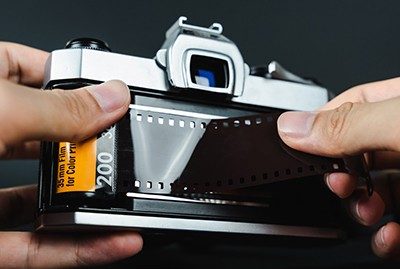
Landmark dedication and acknowledgments
Landmark dedication
The American Chemical Society (ACS) honored the birthplace of consumer photography with the National Historic Chemical Landmark (NHCL) designation in a ceremony at the Kodak Center in Rochester, New York, on Oct. 3, 2022. The commemorative plaque reads:
George Eastman and the Eastman Kodak Company brought photography to everyone. Before his innovations, photography was cumbersome, requiring heavy, fragile equipment and an array of chemicals used to prepare photo-graphic plates just before use. The elaborate process limited photography to a select few. In the 1880s, Eastman developed a convenient method of preparing ready-to-use plates. Improvements led to flexible, roll film as well as photo processing and printing done by mail order. Millions of people worldwide captured memories using cameras and film, leaving all the chemistry to Kodak. The ease of this process was summed up by the company’s slogan, “You press the button, we do the rest.”
Acknowledgments
Written by James Reynolds.
The author wishes to thank contributors to and reviewers of this booklet, all of whom helped improve its content, especially members of the ACS NHCL Subcommittee.
The nomination for this Landmark designation was prepared by the Rochester Section of ACS.
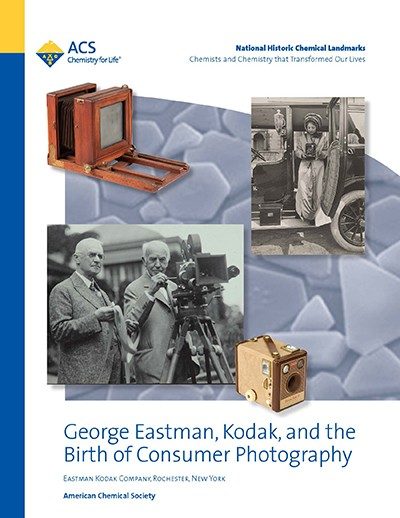
Booklet PDF

